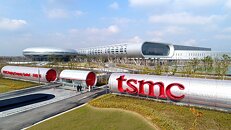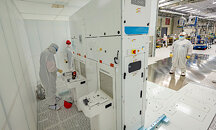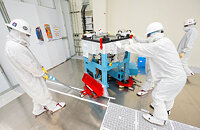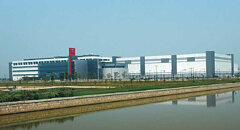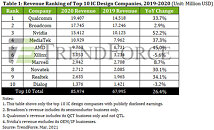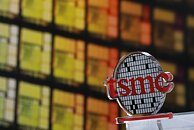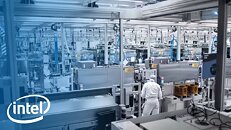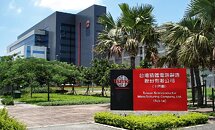
Foxconn Eyeing Malaysia for Semiconductor Fab
Foxconn's ambitions as a semiconductor player are growing with yet another potential joint venture being announced, this time in Malaysia. Hang on, Foxconn doesn't make semiconductors you might be thinking right now, but the company has actually owned semiconductor fabs since 2016, when it acquired Sharp and ended up with an 8-inch fab in Fukuyama in Japan. Foxconn has also tried to buy an 8-inch fab in Malaysia in 2020, as well as trying to take over Taiwanese non-volatile memory manufacturer Macronix at one point. It seems like the company has decided to take a different route this year, with news of a joint venture in India and now plans of another joint venture with Dagang NeXchange Berhad (DNex) in Malaysia.
The two companies have signed a memorandum of understanding (MOU), although it's a subsidiary of Foxconn, Big Innovation Holding Limited (BIH) that actually signed the paperwork. The MOU is about building a 12-inch fab according to Focus Taiwan/CNA which reports that the fab will be making chips using 40 to 28 nm processes. It's possible that this will be for the various EV projects that Foxconn is involved with and it would be a less risky way to enter the semiconductor market for Foxconn. The fab is said to be able to output 40,000 wafers a month once it starts, although when this will be is anyone's guess at the moment. Foxconn's focus is on what the company calls the 3 plus 3 initiative, which relates to electrical vehicles, robotics and healthcare solutions, which are built in AI, semiconductors and communication technologies, all presumably from within Foxconn. Time will tell if Foxconn manages to pull this off, but until the construction of the fab has started, this is nothing more than a potential project for Foxconn.
The two companies have signed a memorandum of understanding (MOU), although it's a subsidiary of Foxconn, Big Innovation Holding Limited (BIH) that actually signed the paperwork. The MOU is about building a 12-inch fab according to Focus Taiwan/CNA which reports that the fab will be making chips using 40 to 28 nm processes. It's possible that this will be for the various EV projects that Foxconn is involved with and it would be a less risky way to enter the semiconductor market for Foxconn. The fab is said to be able to output 40,000 wafers a month once it starts, although when this will be is anyone's guess at the moment. Foxconn's focus is on what the company calls the 3 plus 3 initiative, which relates to electrical vehicles, robotics and healthcare solutions, which are built in AI, semiconductors and communication technologies, all presumably from within Foxconn. Time will tell if Foxconn manages to pull this off, but until the construction of the fab has started, this is nothing more than a potential project for Foxconn.

















